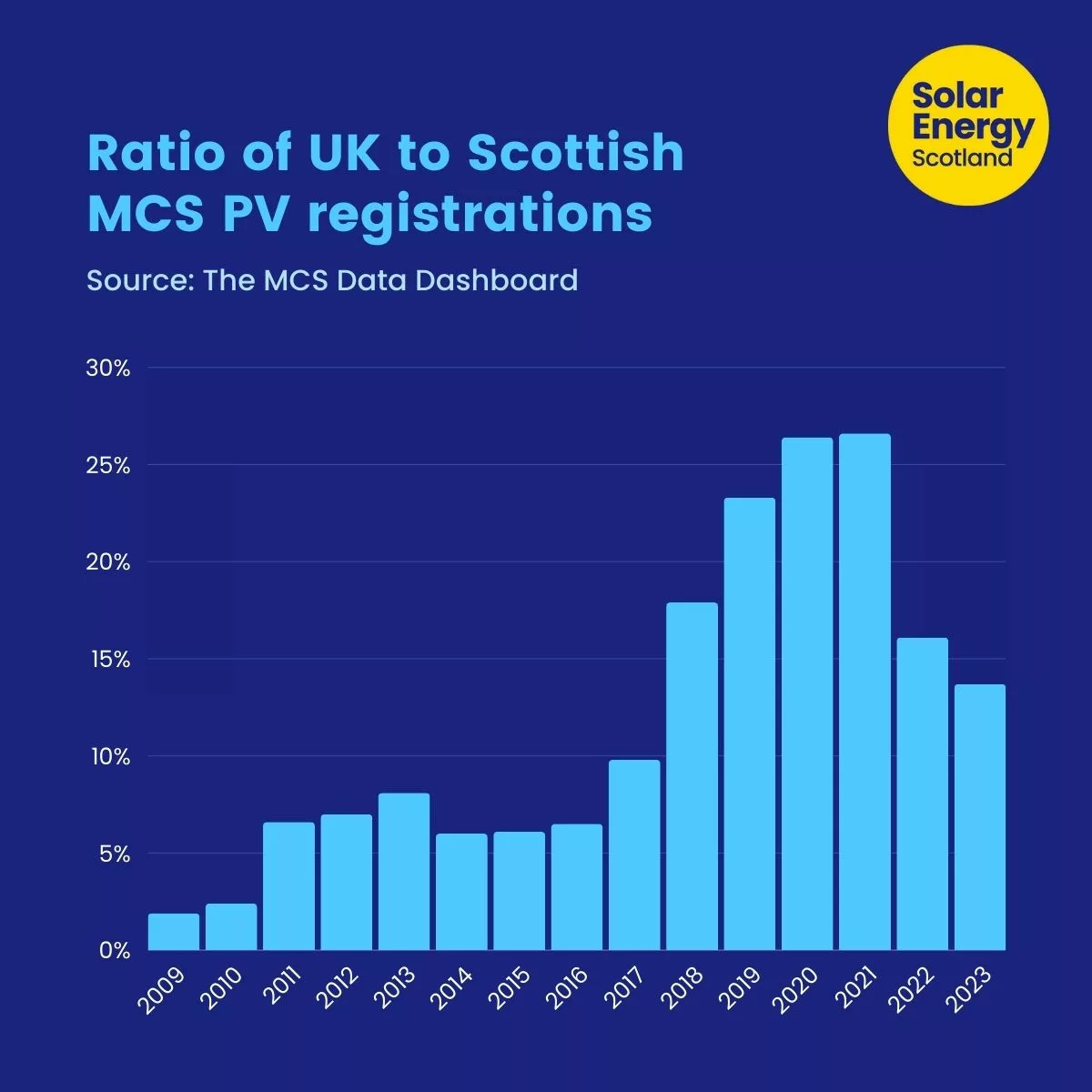In the dynamic landscape of Scotland’s solar journey, let’s explore the positive shifts that have unfolded over the past few years. Three years ago, Scotland made headlines by installing about a third of all new solar panels on UK rooftops, impacting the country’s renewable energy scene.
While Scotland’s share of new solar installations compared to the rest of the UK has halved since then, there’s more to the story than meets the eye. According to MCS data up to September this year, Scotland boasts an impressive 20,678 PV installations, each with a capacity of 50kW or less. This is just a hair shy of the 22,197 recorded across the entire country last year, setting the stage for a potential new record-breaking year.
Remarkably, this figure was more than double the number seen in 2019, a testament to the resilience and growth of Scotland’s solar sector, even after the conclusion of feed-in tariffs in 2019. The catalyst for this growth has been the push for newbuild homes to achieve a specific energy performance certificate (EPC) level since 2016. With photovoltaic technology emerging as one of the easiest ways to meet these standards, it has become a common sight on the rooftops of most newbuilds, approaching what one might call a “solar mandate.”
In 2015, only 6% of MCS registrations were in Scotland, but by September 2020, this figure had surged to an impressive 32% of UK-wide installations. Although this proportion has scaled back to 14%, considering Scotland’s population difference and less sunny conditions, it remains a noteworthy achievement.
So why the changes in proportion?
Aside from a blip in 2020, the Scottish solar industry has consistently grown year-on-year since 2018, mirroring the overall trend across the UK driven by the energy price crisis.

Ratio of UK to Scottish MCS PV registrations 2009-2023 | Data source: MCS Dashboard
As we delve into the future, the Scottish solar market faces some challenges, but opportunities abound. Energy prices are predicted to rise again, signalling potential growth. While much of the current market depends on the EPC rule, there’s a silver lining even as this regulation concludes in April with the introduction of the New Build Heat Standard.
This new standard is set to revolutionise the landscape by prohibiting direct emissions heating systems like gas and oil boilers in new residential and commercial buildings. Instead, alternatives such as air source heat pumps will take centre stage, offering significant benefits for carbon emissions and indoor air quality.
Continued support for the sector from the Scottish Government is needed and the recent commitment to a minimum of 4GW and an ambition to 6GW is a great step in the right direction. There’s optimism to be found in the increasing prevalence of solar panels on new Scottish homes. With energy bills expected to remain high, consumer demand and expectations could play a pivotal role in determining the trajectory of Scotland’s domestic solar industry.
In conclusion, while challenges exist, the outlook for Scotland’s solar journey remains positive, with a resilient industry, a growing awareness of renewable energy, and the potential for consumer-driven momentum shaping a bright future for solar power in Scotland.
Read more on Scotland’s recent commitment: Scottish Solar industry welcomes commitment to boost solar energy generation in Scotland